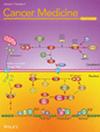The Role of Lymphocyte Recovery Index in Prognosis Prediction for Locally Advanced Cervical Cancer With Radiation-Induced Lymphopenia
Abstract
Background
In patients with locally advanced cervical cancer (LACC) undergoing concurrent chemoradiotherapy (CCRT), the high incidence of radiation-induced lymphopenia significantly affects prognosis. There are significant variations in lymphocyte count (ALC) recovery patterns among patients, and their impact on prognosis remains unclear. This study aims to quantify the lymphocyte recovery patterns by the lymphocyte recovery index (LRI) and evaluate its prognostic value.
Methods
This study reviewed patients with LACC who had ALCs available within 6 months post-CCRT. Lymphopenia was graded using CTCAE 5.0, and lymphocyte recovery patterns were quantified using LRI (the ratio of ALCs at 6 months post-treatment to baseline ALCs). Cox regression analysis was conducted to assess the correlation between LRI, other clinical factors, and survival. The dose–volume of bone marrow (BM) following pelvic radiotherapy was collected, and measurements of spleen standardized uptake value (SUV) and spleen-to-liver SUVmax ratio (SLR) were obtained from pre-treatment 18F-FDG PET/CT. Logistic regression analysis was used to identify independent risk factors for LRI.
Results
A total of 180 patients were included retrospectively. During CCRT, 53 patients (29.4%) experienced G4 lymphopenia. The median LRI was 53.4% (range 13.2%–159.4%). Multivariable analysis revealed that LRI, G4 lymphopenia, and FIGO stage were associated with progression-free survival (PFS) and overall survival (OS). Subgroup analysis revealed that the degree of lymphopenia (G4 and G1-3) did not affect the correlation between LRI and PFS (P: 0.001 and 0.011) or OS (P: 0.003 and 0.043). Regarding FIGO stage, the impact of LRI on PFS (p < 0.001) and OS (p < 0.001) was primarily observed in patients with FIGO stage > II. Logistic analysis identified BM-V10 > 96.0% and SLR > 0.90 as independent risk factors for LRI.
Conclusion
In patients with LACC after CCRT, the LRI is associated with prognosis. Splenic metabolism and BM irradiation are associated with lymphocyte recovery.


 求助内容:
求助内容: 应助结果提醒方式:
应助结果提醒方式:


